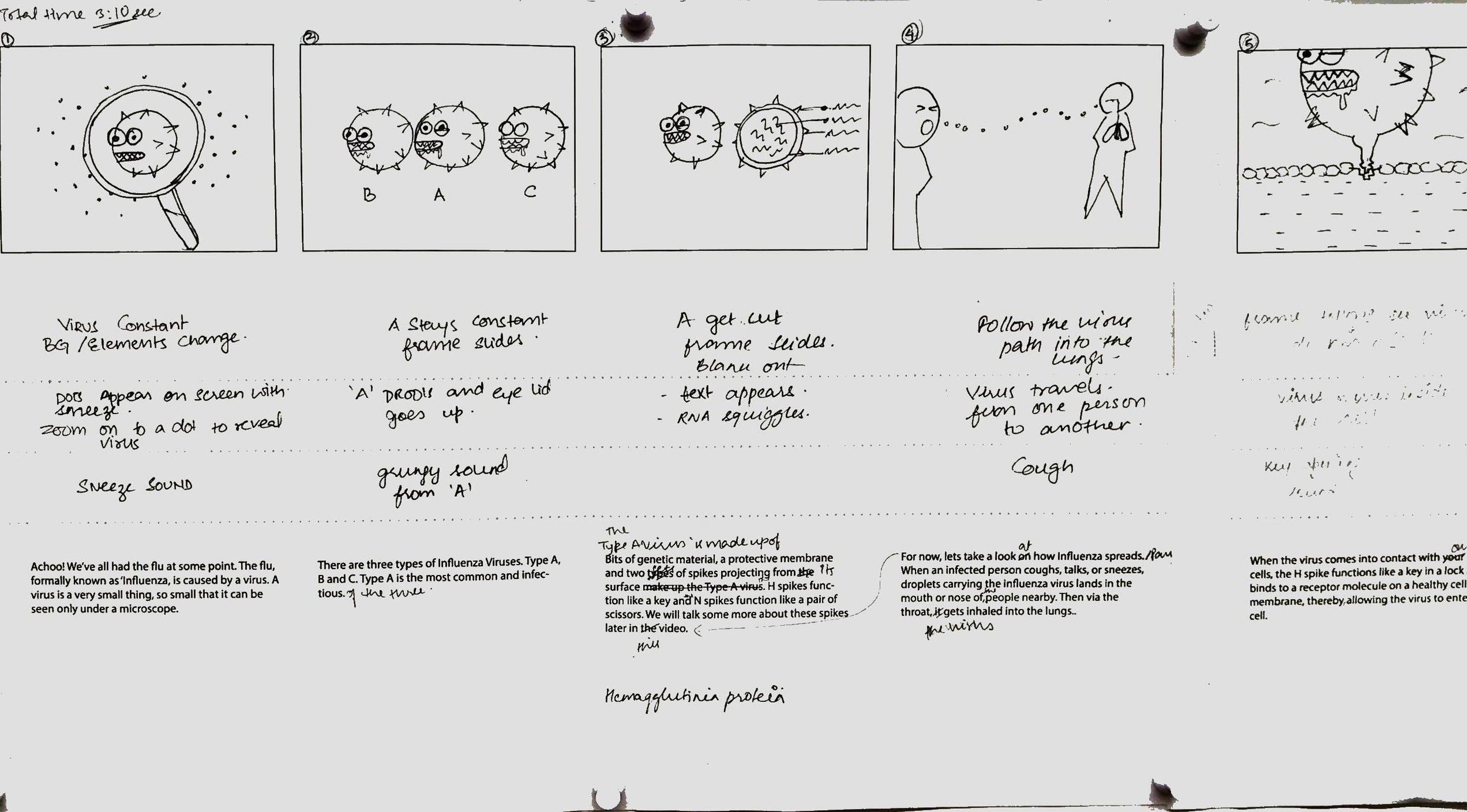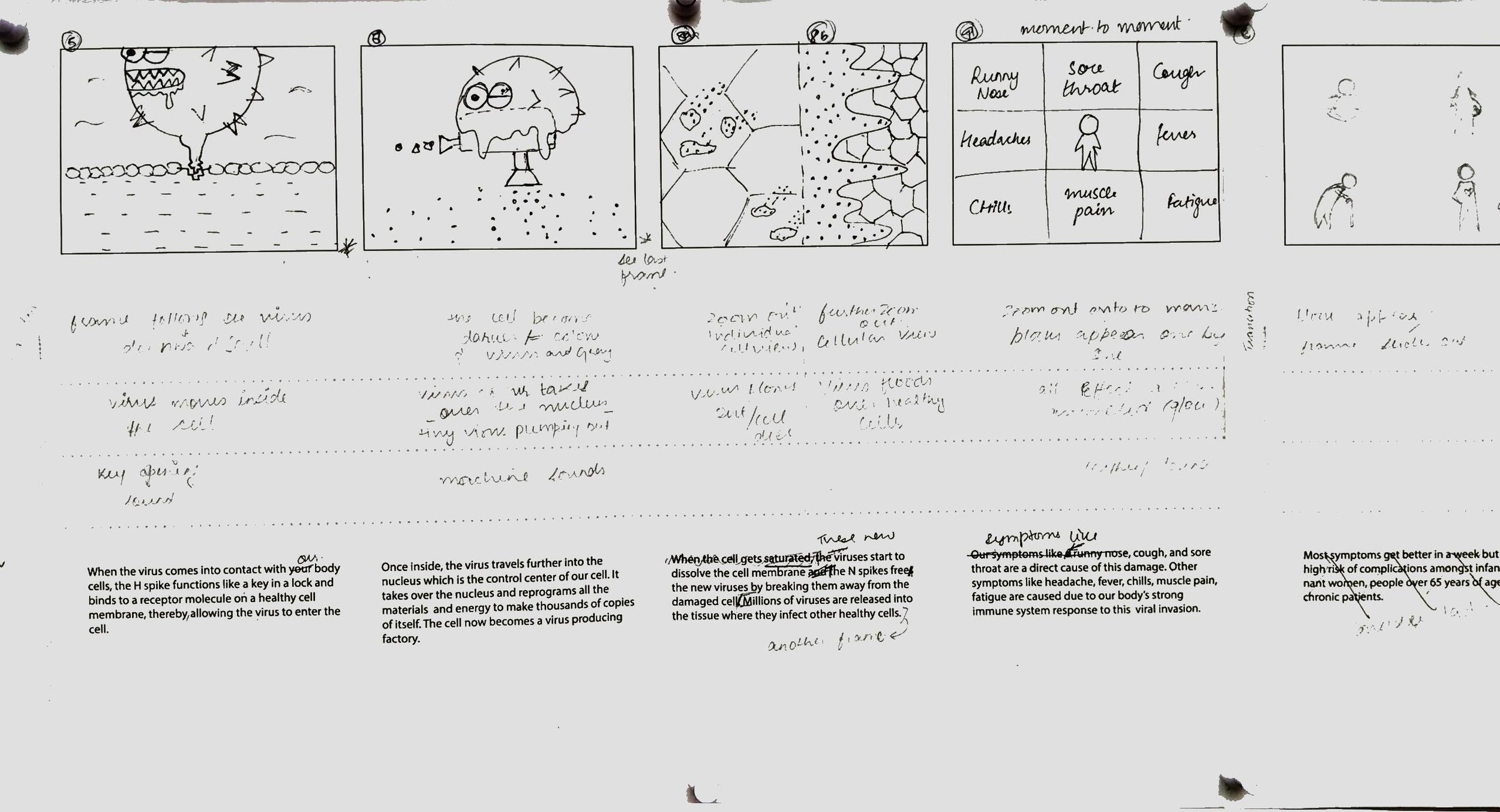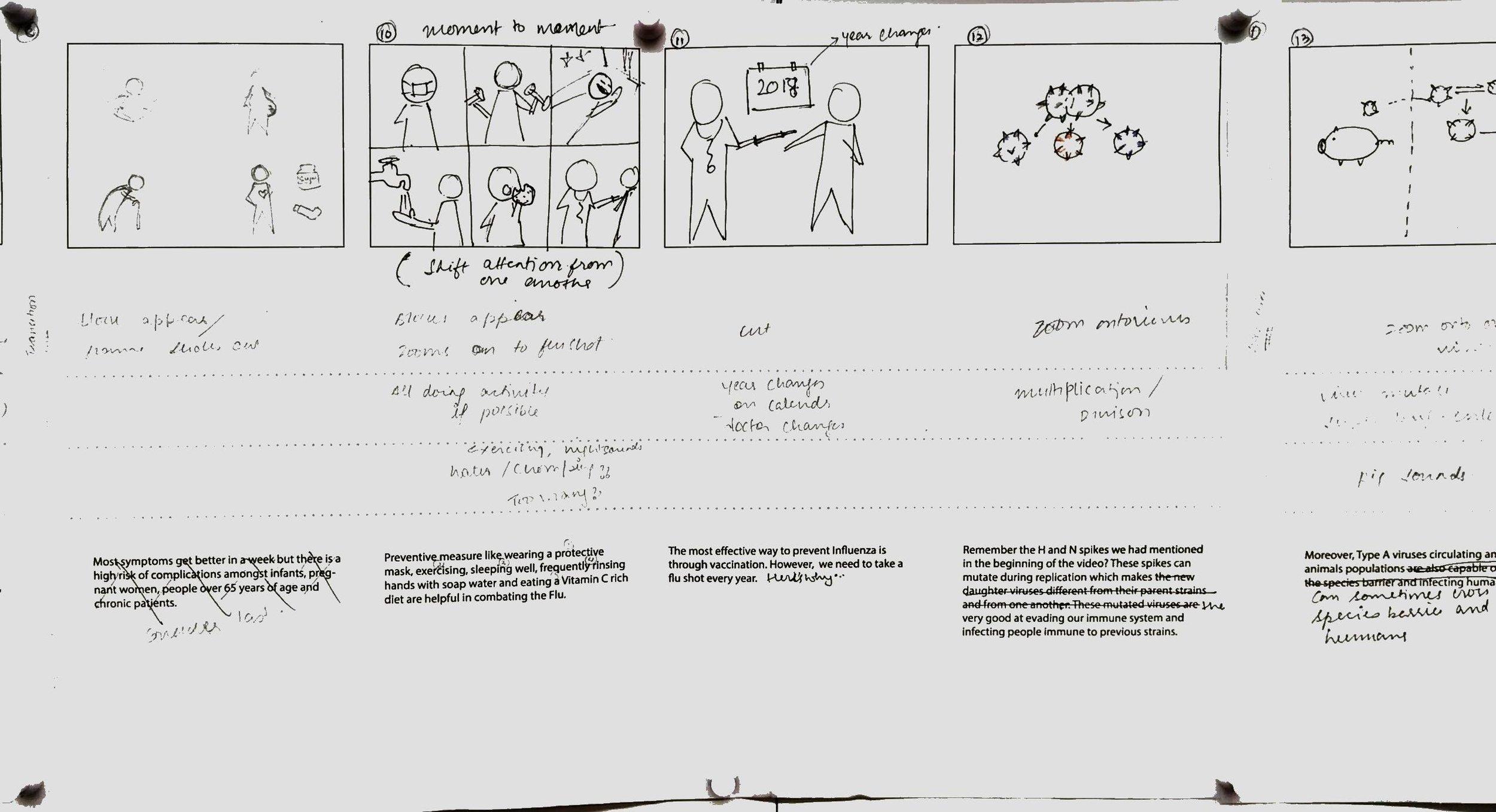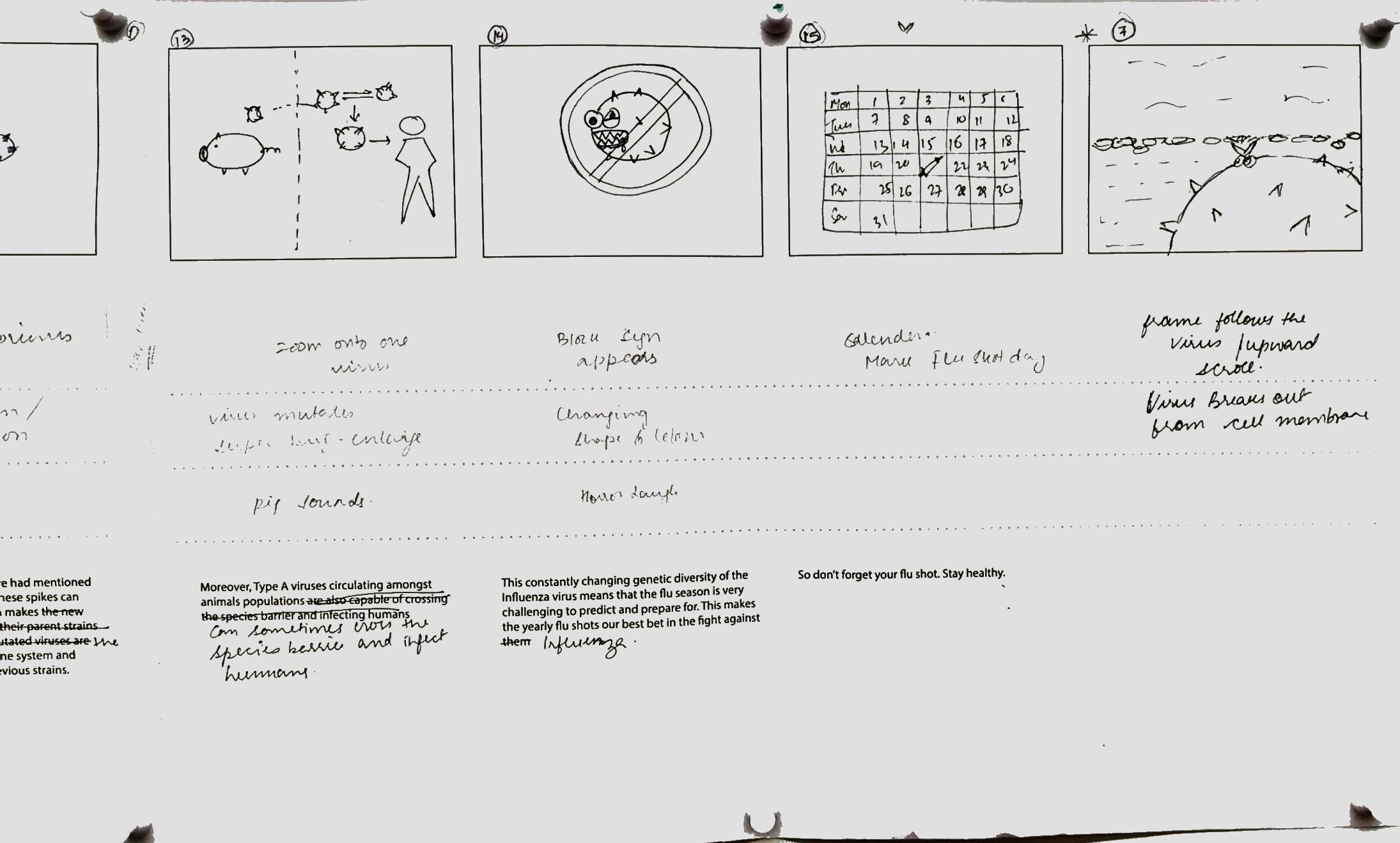Understanding Influenza:
Visualizing complex concepts
This project applies communication design principles to simplify and effectively communicate the complexity of the invisible but potent Influenza Virus to a larger audience using motion graphics.
DURATION: 4 Weeks
MY ROLE: Motion graphics, Adobe Illustrations, Storyboarding
TOOLS: After Effects, Illustrator, Audacity
Watch the Final Video
(Runtime: 3:30mins | Caution: It might get loud)
DESIGN PROCESS
01 IDEATION
Why do it? Making abstract concrete
We all encounter information that we find difficult to grasp. Despite the complex nature of information, the form that is used to communicate the content can aid or hinder understanding. In the case of Influenza, its invisible nature makes it even more difficult to communicate what it is, how it spreads and effects humans. The lack of information leads to misinterpretation and contributes to the lack of trust in the efficacy of flu shots.
Influenza is widely researched but the complexity of the topic and the unappealing clinical descriptions alienate people from understanding the virus. Through the use of illustrative motion graphics, I wanted to explain the virus and its effects in a simplified yet meaningful way that people could engage with.
As with any storytelling exercise, my narrative started to streamline as I identified the main actors in my story and defined the relationships between them.
02 THE NARRATIVE
How to create an engaging story?
To gradually bring the audience into the story, I started my narration with a simple introduction to Influenza and then continued on to describe its effects and ways of spreading. I decided to end the narrative with reasons explaining the virulence of the Influenza virus and the vaccines' capability to combat it.
Moyer's swim-lane storyboarding technique helped in developing the visual, aural, and temporal elements simultaneously with the script, pacing, and transitions. This allowed for a cohesive story-telling experience.
Dynamic genetic makeup: crossing the species barrier
03 VISUAL STYLE
What does the characters look like?
The Influenza virus is invisible to the naked eye and thus its visualization was integral to the video. I built onto the common mental models associated with virus/germs/flu/sickness and used the color green to represent the Influenza virus. Since the virus itself is microscopic, I kept its shape simple and tried to visualize the other elements/actors as close to real as necessary, sometime using exaggeration to communicate the point.
I have often used videos by 'Kurzgesagt' (totally love their graphic style) to explain science stuff to my niece and for this project, I drew a lot of inspiration from there.
A quick testing with my peers revealed that humanizing the flu's character made it more relatable and engaging.
04 ANIMATION
How can I use movement to draw focus?
The microscopic nature of the flu virus mandated that the narrative zoomed in and out quite often. Employing scene-to-scene change transitions helped to maintain the continuity of the story. Layering visuals, aural and temporal elements allowed to convey information more seamlessly while simultaneously enriching the overall experience for viewers. I used repetition as a method to highlight the key points of the video. Movement played a crucial role in drawing focus to important scenes in a timely manner.
05 USER TEST
Feedback from Peers
Testing the effectiveness of my concept was paramount. Peer reviews and in-class workshops proved extremely helpful in developing both, a coherent narrative and a comprehensible visual design language.
Earlier over-stylized visualization made it difficult to make connections
Revised version after peer feedback
Final screens
The structral make-up of Influenza Type A virus
Influenza spreads when an infected person coughs or sneezes.
The virus takes over the cell's reproduction cycle and uses it to multiply itself
The new-born virus bursts the host cell and spreads over to healthy cells
Symptoms are a direct cause of the damage caused by the viral invasion
Vaccination is our best defense against Influenza
If interested, read my blog detailing the complete process of this project.


















